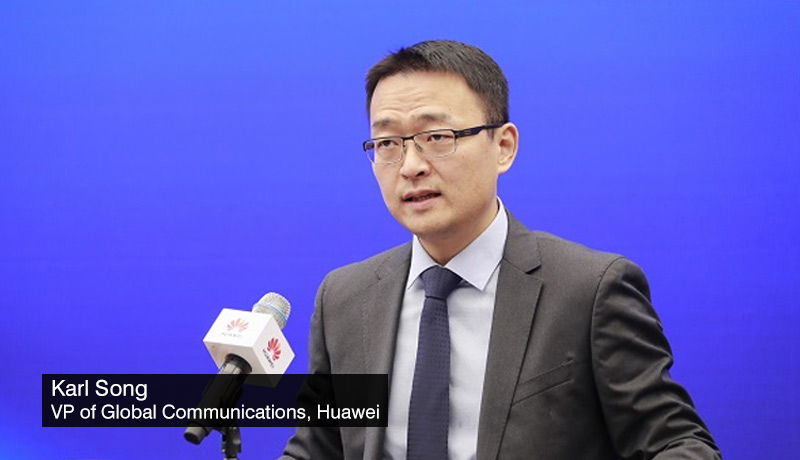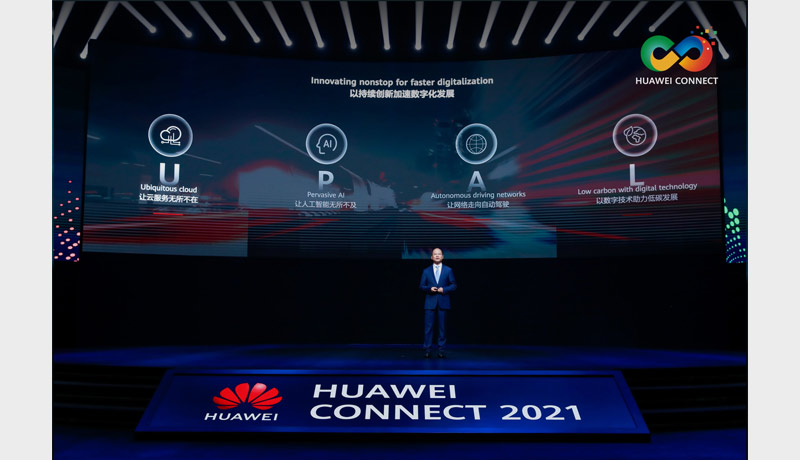
Based on insights revealed by the global ICT leader Huawei, there are currently 176 commercial 5G networks, more than 10,000 5G-powered industrial digitalization projects, and more than 490 million 5G users around the world. In addition, 81% of organizations worldwide are using cloud computing and related services. AI is also developing faster than ever. AI is now adopted by over 60% of companies in the high-tech, telecoms, finance, and automotive and assembly industries.
Huawei’s VP of Global Communications, Karl Song stated: “Digital technology is reshaping the world. More than 170 countries have released a national digital strategy. Recent developments have reminded us that digital transformation is now more real and urgent than ever.”
Last week, Huawei kicked off HUAWEI CONNECT 2021, its annual flagship event for the global ICT industry. Under the theme “Dive into Digital”, the event is set to explore how digital technology can better integrate with business scenarios and industry know-how to address critical business challenges, and how stakeholders can work together more effectively to foster an open industry ecosystem and drive shared success.
“Huawei’s vision and mission is to bring digital to every person, home and organization for a fully connected, intelligent world. I believe helping industries go digital is an important part of this mission,” Song added.
“The whole world is paying more attention to carbon emissions and climate change. The EU aims to become carbon neutral by 2050. China aims to reach peak emissions by 2030 and become carbon neutral by 2060. To meet these goals, digital technology will be key to reducing emissions across all industries. According to the World Economic Forum, by 2030, ICT will help reduce industrial emissions by 12.1 billion tons. This is 10 times greater than the emissions by the ICT industry itself,” stated Song.
Commenting on Huawei’s involvement in the Middle East, the Huawei executive said: “Huawei has been working in the Middle East for over two decades, and is committed to promoting the development of local communities. We have won trust and support from local governments, telecom operators, enterprise customers, partners, and consumers. Since 2018, we have been helping Middle Eastern countries accelerate 5G rollouts. Many GCC countries were among the first wave of commercial 5G rollouts worldwide.”

At HUAWEI CONNECT 2021, the company launched the industry’s first distributed, cloud-native service called UCS – a ubiquitous cloud-native service available on HUAWEI CLOUD. With UCS, Huawei plans to provide enterprises with a consistent experience while using cloud-native applications that are not constrained by geographical, cross-cloud, or traffic limitations, thereby accelerating digital transformation in all industries.
HUAWEI CLOUD also announced two new regions, and ten new services including MacroVerse aPaaS, OptVerse AI Solver, HUAWEI CLOUD Stack 8.1, Pangu drug molecule model, and SparkRTC. It was also revealed that the first virtual human, Yunsheng, is set to join HUAWEI CLOUD.
Huawei’s Rotating Chairman Eric Xu added that HUAWEI CLOUD, the company’s cloud service that was launched just four years ago, has already brought together more than 2.3 million developers, 14,000 consulting partners, and 6,000 technology partners, and also made more than 4,500 services available in the HUAWEI CLOUD Marketplace. It has become an important platform for Internet companies, enterprises, and governments alike to take their organizations digital. As of September 2021, HUAWEI CLOUD and partners operate 61 Availability Zones (AZs) in 27 geographic regions worldwide, covering more than 170 countries and regions.
Huawei’s full-stack, all-scenario AI portfolio released back in 2018 is also progressing as expected. Its MindSpore framework has become the mainstream AI computing framework in China. Meanwhile, the Atlas 900 cluster, as well as the cloud services based on it, currently serve more than 300 enterprises, supporting the training of many models, which include the HUAWEI CLOUD Pangu large models. HUAWEI CLOUD ModelArts has made AI application development incredibly simple with its full-pipeline, scenario-based services. The end goal of ModelArts is to enable each and every engineer to independently develop their own AI applications.
Xu also introduced Huawei’s innovations in the network domain. As organizations go digital, they tend to see exponential growth in network complexity. To tackle this, Huawei has been innovating solutions for global networks based on the concept of autonomous driving network (ADN). The company has been working with customers in the finance, education, and healthcare sectors to innovate and deploy new applications, and build networks that are self-fulfilling, self-healing, self-optimizing, and autonomous.
Xu went on to explain how Huawei is using digital technology to support low-carbon development, as part of global efforts to achieve peak CO2 emissions and carbon neutrality.
Huawei hosts HUAWEI CONNECT 2021 online from September 23 to October 31. The theme of this year’s event is Dive into Digital. The company will dive deep into the practical application of technologies like cloud, AI, and 5G in all industries, and how it can make organizations of all shapes and sizes more efficient, more versatile, and ultimately more resilient as we move towards economic recovery.
For more information, please contact our local team or check out https://www.huawei.com/en/events/huaweiconnect
